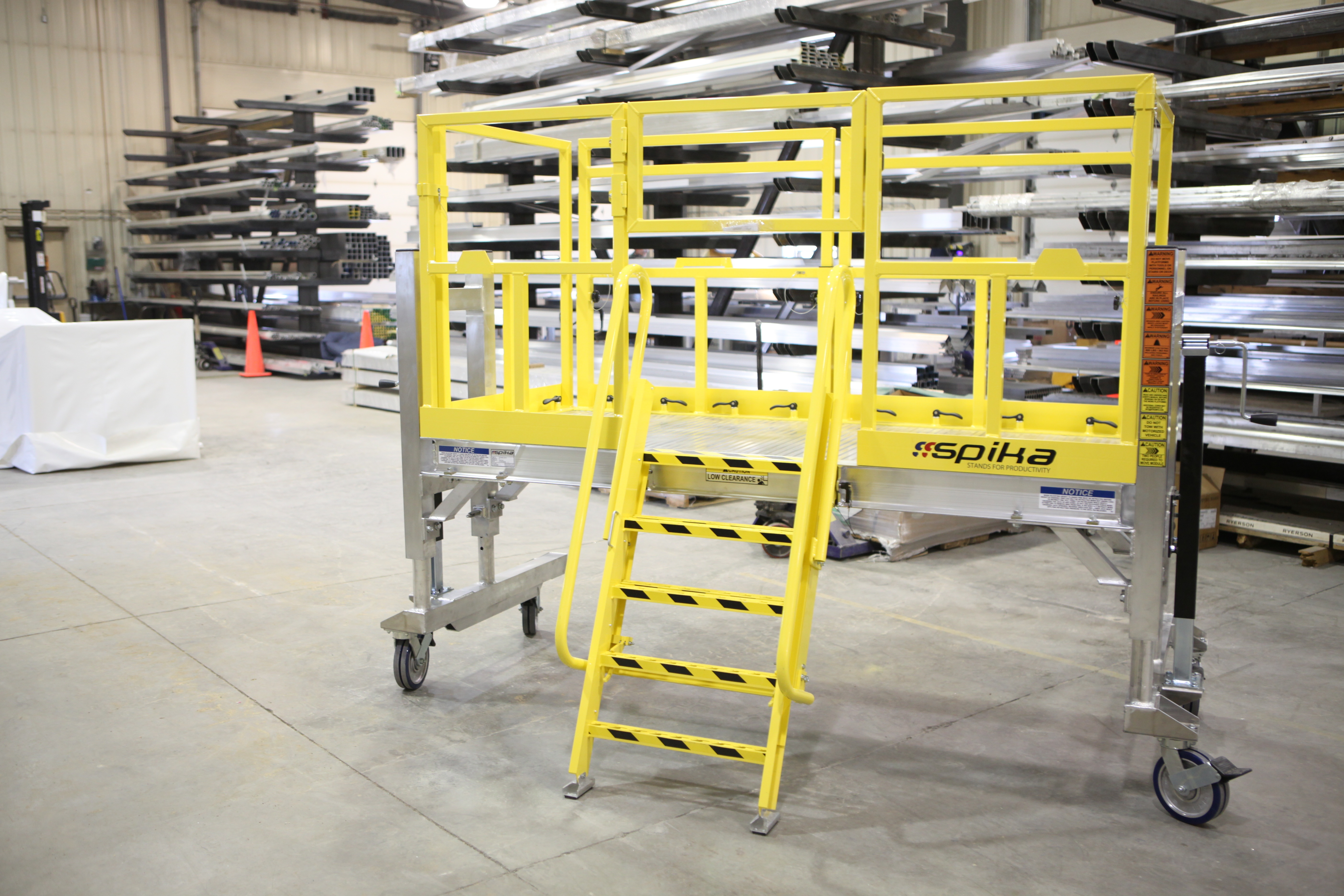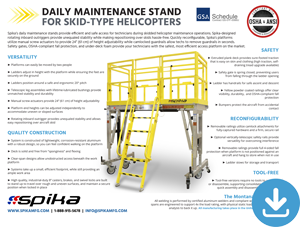6 Tools Everyone in Lightweight Helicopter Maintenance Should Be Using
A few days ago, I was chatting with a guy that was in the market for a maintenance ladder or work platform for a lightweight helicopter. He emphasized that quality was his top priority, but that price was going to be the make-it-or-break-it factor in his decision. As he put it, “I mean, I like Ferraris too, but I can’t afford one.”
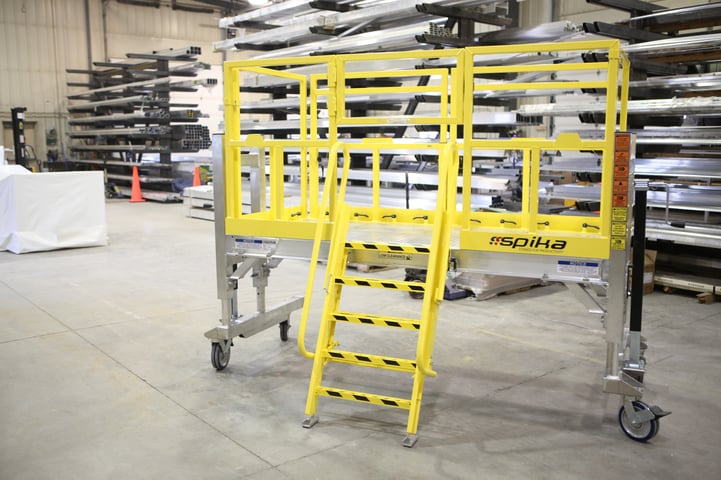
To a large extent I agree. There’s no need to invest in the Ferrari of maintenance stands when a simple update to the good old fashioned stand will do. Eliminate all unnecessary bells and whistles and just get something that will keep your techs working safely and efficiently.
However, when it comes to lightweight aircraft maintenance, purchasing agents are prone to dismiss six critical safety features and efficiency-boosting tools as mere "bells and whistles".
When your next facility update arrives, consider incorporating the following items into your fleet of maintenance equipment.
1. Air and Electric Hookups
There are plenty of products on the market that offer small tool trays attached to the aircraft maintenance platform to make maintenance more ergonomic and efficient. While these tool trays do amplify efficiency to a degree, they don’t solve the problem of having to string cords and hoses across the facility to hook up air and electric tools. Providing on-board air and electric hookups for your techs saves a tremendous amount of time and eliminates the bulk of hazardous cords.
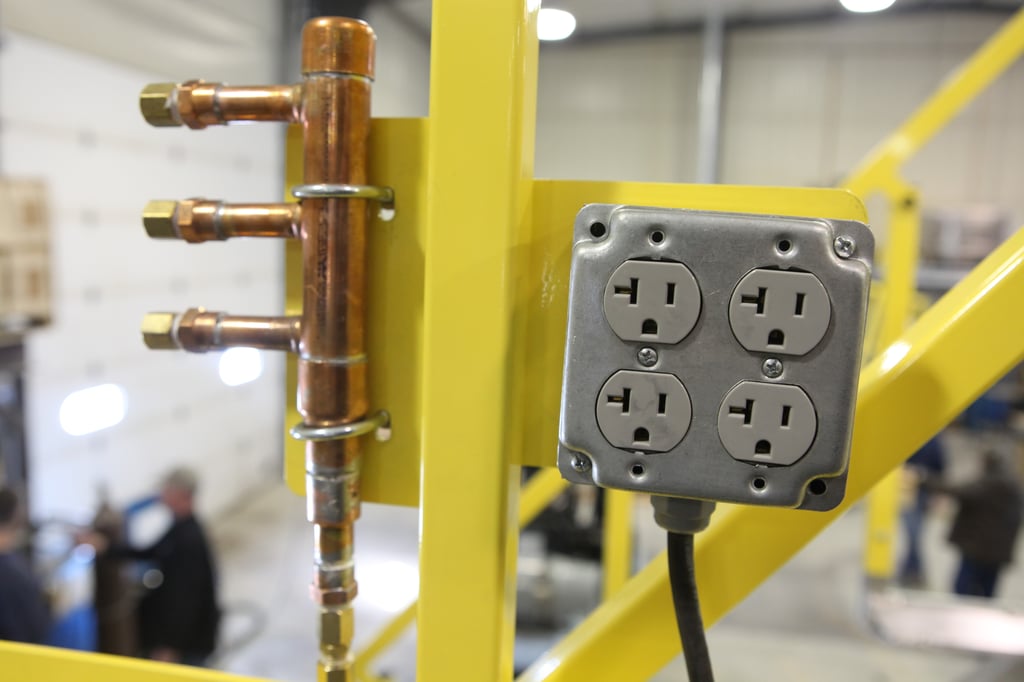
2. Tool-Free Guardrail Attachment
Since you have a small aircraft, your priority is getting the most bang from you buck, which means you need your maintenance stand to conform to all parts of your aircraft — including both sides and the tail. Because of the varying interfaces at those maintenance points, configurability is essential. For example, when placed directly against the side of a helicopter, no guardrails are required at the front. But when positioned for tail rotor maintenance, guardrails must be present on all sides of the platform to provide OSHA-compliant fall protection. To keep reconfiguration time to a minimum, consider purchasing an aluminum stand that has tool-free guardrail attachment — specifically, systems that come with fully-captured camlock-bolting guardrails. While pin and socket systems are "technically" tool free, they aren't as user-friendly or stable. For an added bonus, get guardrails with hangers so they can be self-storing on top of the platform.

3. Telescopic Rails
Adding to the ease of reconfigurability, a stand that has telescopic railings offers the versatility you need to access all parts of your aircraft with only one stand. Vertically telescopic rails allow you to access difficult areas where obstacles such as rotor blades may limit clearance, while still providing the required 42” safety railing height around the rest of the work area. Horizontally telescopic rails provide 360° fall protection around curved aircraft surfaces, particularly when protecting the ends of extension slider sections, keeping you safe and OSHA-compliant.
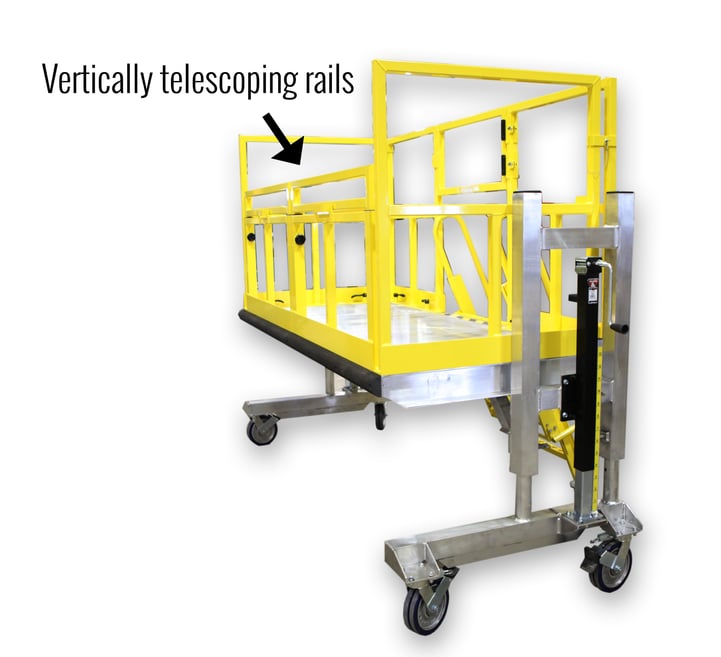
4. Inboard Outriggers
The easiest way to boost efficiency is to make sure your equipment conforms precisely to the helicopter you’re maintaining. If you’re working on an OH-58, AS350, UH-72, H125, or another skidded helicopter, your maintenance equipment should have some type of support inboard of the skid to maintain stability. While some stands can be lifted over the skid or interlocked by feeding around the front and rear separately, stands with rotating inboard outriggers provide fast, easy positioning and ultimate stability. Inboard outriggers are absolutley critical for maintaining stability when over-reaching skids. For added conformance to the helicopter's surface, consider equipment that has deck extension sliders that extend independently.
Want to know more? Download this brochure for OSHA-compliant maintenance stands for skid-type helicopters.
5. Height Adjustability
This is where many companies decide to cut corners, and I can’t stress how much this feature will improve your safety and efficiency. If your tech has the right access at the right height, he or she won’t have to overreach, crouch, or balance precariously to get the job done. Many stands come with manual actuators that can adjust by at least 24”. (If you want to go fancy, you can invest in a stand that actuates electrically.) If you do choose maintenance equipment that has height adjustability, make sure systems utilizing stairs have maximum inclines of no more than 50° and maintain equal distance between steps through all height settings. If the stand uses a built-in ladder (which offeres a smaller overall stand footprint), make sure the ladder adjusts to all heights and doesn't exceed a 20° pitch at any height.
Watch this video to see electric dual-stage acutation in action.
6. Adequate Deck Size
A lot of aircraft maintenance has been performed off of simple ladders or small ladder stands. While this is adequate in some applications, often it falls short of providing efficiency or preventing maintainers from reaching outside of the safe zone to access areas without moving their ladder. Working with a deck that is matched to the size of the area being accessed is critical to attaining desired task efficiency and minimizing injuries. An adequately sized work stand pays for itself fairly quickly.
Need a custom-designed work deck?
Lightweight aircraft maintenance equipment doesn't require a bunch of expensive add-ons, but it does require that you invest in the right features to keep your techs working efficiently and safely.
Curious about other efficiency-boosting tools?


